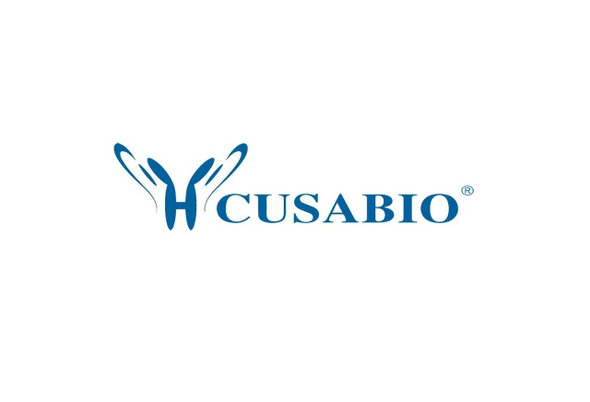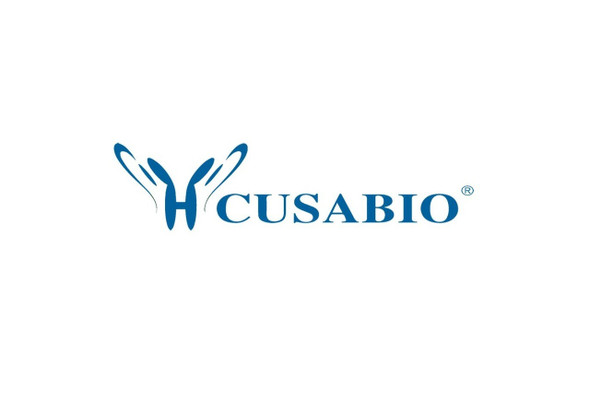Cusabio Human Recombinants
Recombinant Human AP-2 complex subunit mu (AP2M1) | CSB-EP001872HUe0
- SKU:
- CSB-EP001872HUe0
- Availability:
- 13 - 23 Working Days
Description
Recombinant Human AP-2 complex subunit mu (AP2M1) | CSB-EP001872HUe0 | Cusabio
Alternative Name(s): AP-2 mu chain;Adaptin-mu2Adaptor protein complex AP-2 subunit muAdaptor-related protein complex 2 subunit muClathrin assembly protein complex 2 mu medium chain;Clathrin coat assembly protein AP50Clathrin coat-associated protein AP50HA2 50KDA subunitPlasma membrane adaptor AP-2 50KDA protein
Gene Names: AP2M1
Research Areas: Transport
Organism: Homo sapiens (Human)
AA Sequence: MIGGLFIYNHKGEVLISRVYRDDIGRNAVDAFRVNVIHARQQVRSPVTNIARTSFFHVKRSNIWLAAVTKQNVNAAMVFEFLYKMCDVMAAYFGKISEENIKNNFVLIYELLDEILDFGYPQNSETGALKTFITQQGIKSQHQTKEEQSQITSQVTGQIGWRREGIKYRRNELFLDVLESVNLLMSPQGQVLSAHVSGRVVMKSYLSGMPECKFGMNDKIVIEKQGKGTADETSKSGKQSIAIDDCTFHQCVRLSKFDSERSISFIPPDGEFELMRYRTTKDIILPFRVIPLVREVGRTKLEVKVVIKSNFKPSLLAQKIEVRIPTPLNTSGVQVICMKGKAKYKASENAIVWKIKRMAGMKESQISAEIELLPTNDKKKWARPPISMNFEVPFAPSGLKVRYLKVFEPKLNYSDHDVIKWVRYIGRSGIYETRC
Source: E.coli
Tag Info: N-terminal GST-tagged
Expression Region: 1-435aa
Sequence Info: Full Length
MW: 76.7 kDa
Purity: Greater than 90% as determined by SDS-PAGE.
Relevance: Component of the adaptor protein complex 2 (AP-2). Adaptor protein complexes function in protein transport via transport vesicles in different mbrane traffic pathways. Adaptor protein complexes are vesicle coat components and appear to be involved in cargo selection and vesicle formation. AP-2 is involved in clathrin-dependent endocytosis in which cargo proteins are incorporated into vesicles surrounded by clathrin (clathrin-coated vesicles, CCVs) which are destined for fusion with the early endosome. The clathrin lattice serves as a mechanical scaffold but is itself unable to bind directly to mbrane components. Clathrin-associated adaptor protein (AP) complexes which can bind directly to both the clathrin lattice and to the lipid and protein components of mbranes are considered to be the major clathrin adaptors contributing the CCV formation. AP-2 also serves as a cargo receptor to selectively sort the mbrane proteins involved in receptor-mediated endocytosis. AP-2 ses to play a role in the recycling of synaptic vesicle mbranes from the presynaptic surface. AP-2 recognizes Y-X-X-[FILMV] (Y-X-X-Phi) and [ED]-X-X-X-L-[LI] endocytosis signal motifs within the cytosolic tails of transmbrane cargo molecules. AP-2 may also play a role in maintaining normal post-endocytic trafficking through the ARF6-regulated, non-clathrin pathway. The AP-2 mu subunit binds to transmbrane cargo proteins; it recognizes the Y-X-X-Phi motifs. The surface region interacting with to the Y-X-X-Phi motif is inaccessible in cytosolic AP-2, but becomes accessible through a conformational change following phosphorylation of AP-2 mu subunit at 'Tyr-156' in mbrane-associated AP-2. The mbrane-specific phosphorylation event appears to involve assbled clathrin which activates the AP-2 mu kinase AAK1 . Plays a role in endocytosis of frizzled family mbers upon Wnt signaling .
Reference: "The DNA sequence, annotation and analysis of human chromosome 3."Muzny D.M., Scherer S.E., Kaul R., Wang J., Yu J., Sudbrak R., Buhay C.J., Chen R., Cree A., Ding Y., Dugan-Rocha S., Gill R., Gunaratne P., Harris R.A., Hawes A.C., Hernandez J., Hodgson A.V., Hume J. Gibbs R.A.Nature 440:1194-1198(2006)
Storage: The shelf life is related to many factors, storage state, buffer ingredients, storage temperature and the stability of the protein itself. Generally, the shelf life of liquid form is 6 months at -20?/-80?. The shelf life of lyophilized form is 12 months at -20?/-80?.
Notes: Repeated freezing and thawing is not recommended. Store working aliquots at 4? for up to one week.
Function: Component of the adaptor protein complex 2 (AP-2). Adaptor protein complexes function in protein transport via transport vesicles in different membrane traffic pathways. Adaptor protein complexes are vesicle coat components and appear to be involved in cargo selection and vesicle formation. AP-2 is involved in clathrin-dependent endocytosis in which cargo proteins are incorporated into vesicles surrounded by clathrin (clathrin-coated vesicles, CCVs) which are destined for fusion with the early endosome. The clathrin lattice serves as a mechanical scaffold but is itself unable to bind directly to membrane components. Clathrin-associated adaptor protein (AP) complexes which can bind directly to both the clathrin lattice and to the lipid and protein components of membranes are considered to be the major clathrin adaptors contributing the CCV formation. AP-2 also serves as a cargo receptor to selectively sort the membrane proteins involved in receptor-mediated endocytosis. AP-2 seems to play a role in the recycling of synaptic vesicle membranes from the presynaptic surface. AP-2 recognizes Y-X-X-[FILMV] (Y-X-X-Phi) and [ED]-X-X-X-L-[LI] endocytosis signal motifs within the cytosolic tails of transmembrane cargo molecules. AP-2 may also play a role in maintaining normal post-endocytic trafficking through the ARF6-regulated, non-clathrin pathway. The AP-2 mu subunit binds to transmembrane cargo proteins; it recognizes the Y-X-X-Phi motifs. The surface region interacting with to the Y-X-X-Phi motif is inaccessible in cytosolic AP-2, but becomes accessible through a conformational change following phosphorylation of AP-2 mu subunit at 'Tyr-156' in membrane-associated AP-2. The membrane-specific phosphorylation event appears to involve assembled clathrin which activates the AP-2 mu kinase AAK1 (By similarity). Plays a role in endocytosis of frizzled family members upon Wnt signaling (By similarity).
Involvement in disease:
Subcellular Location: Cell membrane, Membrane, coated pit, Peripheral membrane protein, Cytoplasmic side
Protein Families: Adaptor complexes medium subunit family
Tissue Specificity:
Paythway: Endocytosis
Form: Liquid or Lyophilized powder
Buffer: If the delivery form is liquid, the default storage buffer is Tris/PBS-based buffer, 5%-50% glycerol. If the delivery form is lyophilized powder, the buffer before lyophilization is Tris/PBS-based buffer, 6% Trehalose, pH 8.0.
Reconstitution: We recommend that this vial be briefly centrifuged prior to opening to bring the contents to the bottom. Please reconstitute protein in deionized sterile water to a concentration of 0.1-1.0 mg/mL.We recommend to add 5-50% of glycerol (final concentration) and aliquot for long-term storage at -20?/-80?. Our default final concentration of glycerol is 50%. Customers could use it as reference.
Uniprot ID: Q96CW1
HGNC Database Link: HGNC
UniGene Database Link: UniGene
KEGG Database Link: KEGG
STRING Database Link: STRING
OMIM Database Link: OMIM







